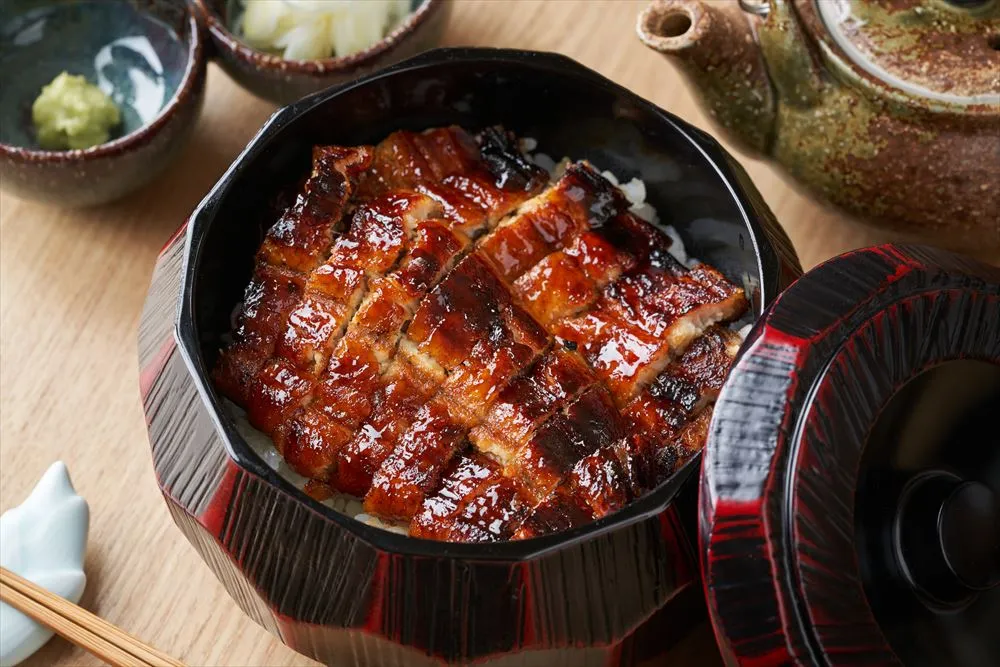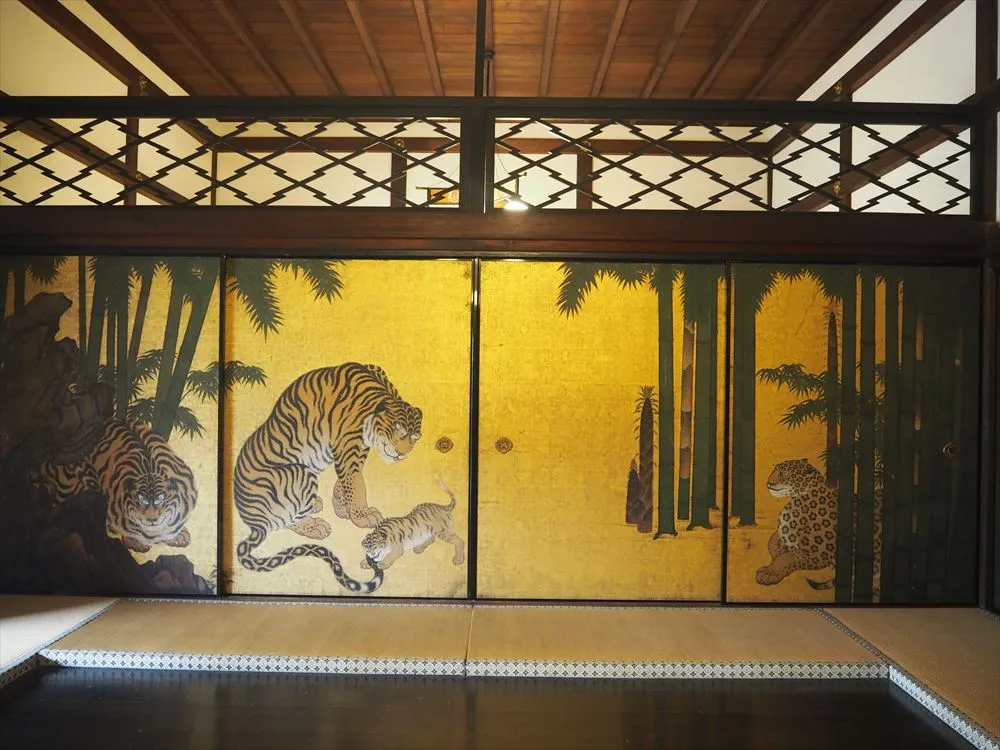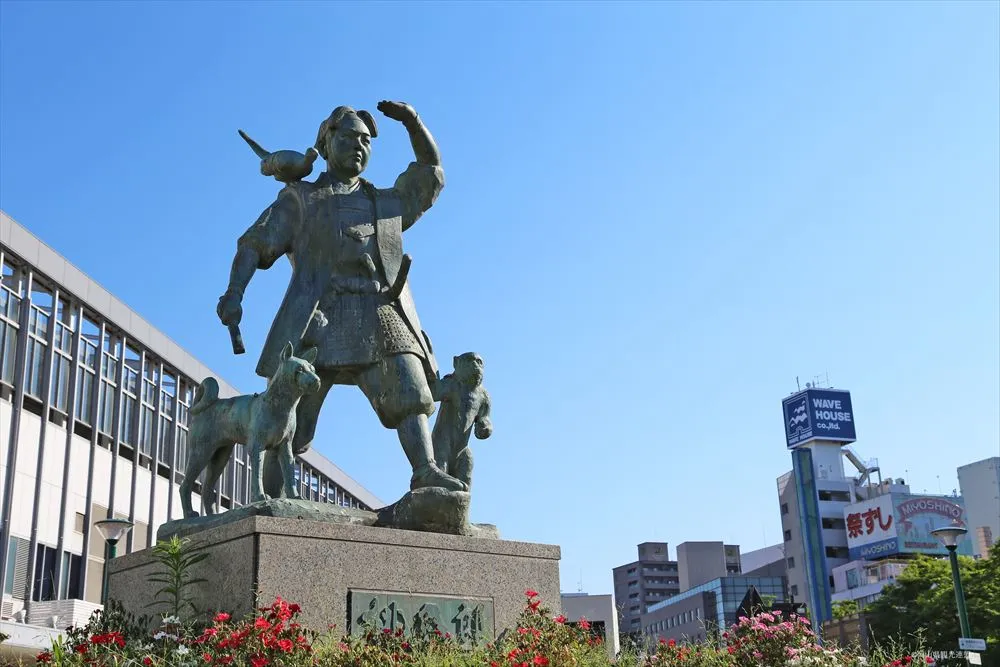KANAZAWA / NOTO
KANAZAWA / NOTO

A trip to the castle town of Kanazawa and the Noto Peninsula, areas known for retaining the ‘olde’ scenery of Japan, can interest, amuse and educate.
Kanazawa – (a famous castle town)
Kanazawa is an undulating town built atop the three hills, Utatsuyama, Kodatunodai and Nodayama, and besides two rivers; the Asanogawa River and the Saigawa River. Three teramachi (temple towns) located outside the town still contain scores of temples in the early 21st century and once acted as the front line in protecting the town against enemy onslaughts. Many a narrow curving alley and steep dead-end streets serve to disorient newcomers and helped in preventing enemy invasion in centuries past.
That said, that Kanazawa was a strongly fortified city is but to see one side of this castle town of lore.
Kanazawa flourished commercially during the Edo period when a unit of measure called the “Kaga hyakuman-goku” (“Koku” (goku) is a unit measuring rice production and hyakuman-goku means one million koku) was in use. The Edo era fief of Kaga yielding a million koku of rice annually was thereby the largest and most influential clan in Japan at the time excluding that of the ruling Tokugawa government.
Area History
Buddhism became popular around Kanazawa in the 15th century thanks to Rennyo, a distinguished priest of the Buddhist Jodoshinshu sect who initiated Buddhist missionary work at Yoshizakigobo (located on the border between Kaga and Echizen) in the latter half of the 15th century. Powerful peasants, discontent with their lot, started religious riots and defeated the then lord Togashi, in the process founding the Republic of Kaga; a rarity in Japanese history but the basis on which the foundation stones of Kanazawa were laid. Sadly, for the people of the republic it ceased to be a century later after being attacked by warlord Oda Nobunaga in the 16th century. Maeda Toshiie was appointed feudal lord of the Kaga and Noto domains by the later Toyotomi Hideyoshi and established himself at Kanazawa in 1583. As a result, the Maeda family encouraged culture and art which in turn led to the prospering of this splendid castle town.
<Sightseeing Places>
Kenrokuen Garden
Kenrokuen Garden, built as a Maeda family garden is ranked as one of Japan’s three most famous gardens alongside Kairakuen in Mito (Ibaraki Prefecture) and Korakuen in Okayama (Okayama Prefecture). Kenrokuen boasts year-round points of beauty and includes the cherry and ume blossoms in spring, the irises in summer, the changing autumnal leaves in fall and the yukitsuri scenery (pine trees supported by umbrella-like ropes to protect branches against the heavy snow) in winter among its attractions.
The present Kanazawa Castle Park is itself the site of the Maeda’s family castle and Gojukken Nagaya in the park was used as an arsenal of sorts storing arms and ammunition. More peaceful pursuits prevail nowadays as citizens enjoy jogging and walking in this large green park.
The magnificent Ishikawa-mon Gate is recognized as a nationally important cultural property and is to the east of the Castle Park. At night illuminated, it is well worth seeing.
Seisonkaku was once the residence of the mother of the 13th lord of the Kaga clan, Nariyasu. A rare fusion of two differing architectural styles, the Sukiyafu-shoin-zukuri and Shoin-zukuri styles, it represents the status of the clan as well as not forgetting feminine delicacy. The color scheme that contrasts ultramarine and Indian red in the Gunjo-no-ma room is a wonder to behold.
On a more modern note, the 21st Century Museum of Contemporary Art, Kanazawa is a new 2004 museum featuring unique and uncovered buildings made primarily of glass – worth seeing but for themselves.

Nagamachi, Korinbo and Katamchi
A few samurai houses still remain in the Nagamachi Buke Yashikiato area between the Kuratsuki-yosui and Onosho-yosui canals as the area was once the residential district of Kaga clan samurai. Stone-paved alleys wind snakelike along their route flanked by earthen walls. Water from the nearby Saigawa River supplies the Kuratsuki-yosui and Onosho-yosui canals, built to provide water for daily necessities, (including firefighting) to the town and also to act as outer moats during times of conflict.
The modern areas of Korinbo and Katamachi are close to Nagamachi and are busy commercial areas of Kanazawa, always filled with people looking to eat, shop, or do both.
Musashigatsuji and Kanazawa Station Omicho Market is often called the kitchen of Kanazawa due to it supporting the Kanazawa food culture for some 250 years. With approximately 170 fish, meat and vegetable shops it is easy to see where the nickname came from.
Famous for traditional Japanese confectionery, Kanazawa, equaled only by Kyoto, is home to the Kashi Bunka Kaikan (Ishikawa Confectionery Culture Center) which displays seasonal confectionery and the tools used in producing confectionery.
Well established shops line the streets in and around Owaricho and a huge dome in front of JR Kanazawa Station, the gateway to Kanazawa, surprises visitors as it is often the first thing they see after they visit the large Tourist Information Center in the station.
Higashiyama and Mt. Utatsuyama
Intriguing scenery opens many eyes and closes many a camera shutter in the area around the riverbank of the Asanogawa River. The Higashi Chaya District has flourished as a hanamachi (entertainment district) since the Edo era and the sound of shamisen and drums being played by geisha sometimes emerges from between the latticed windows taking passers-by into the past.
Around 50 temples gathered at the foot of Mt. Utatsuyama provide an interesting side trip and the raised Utatsuyama Park offers a view over the whole of Kanazawa City.
Teramachiand Nomachi
As the Saigawa River calmly flows around the base of Teramachi Hill, Japanese restaurants continue in business in the Nishi Chaya District, one of the three hanamachi in Kanazawa. Lattice windows, the sound of shamisen and the overall ambience recreate the atmosphere of days gone by in similar form to the ‘Higashi’ district.
The Kanazawa Nishi Chaya Museum stands at the site of the famed Chaya (geisha house) Yoshiyonero; the same Yoshiyonero in which author Shimada Seijiro spent his younger years. The current building duplicates the appearance of the one time geisha house and the works of Seijiro as well as tea ceremony utensils are displayed in the museum.
About 70 temples can be found in the Teramachi Jiingun District. The Myoryuji Temple, being particularly famous for the many ‘stealth’ contraptions in the temple is also called the “Ninja Temple.” (NB: Prior reservation is necessary for those who would like to visit the interior of this temple).
Another aspect of local culture is the region’s Kutani porcelain. Renowned for its elegant colors, visitors today can see the complete process of porcelain production – from clay blending to finishing at the Kunani Kosen Pottery. Hand-painting the porcelain is another option open to visitors for a fee.
Traditional Japan along the Noto Peninsula
The north to south stretching Noto Peninsula is surrounded on three sides by the Sea of Japan and contains some of the remotest areas in this part of the country. Perhaps because of this, the culture and traditional crafts still practiced here reminds people of their historic ties to the Asian mainland.
<Sightseeing>
Chirihama
The Chirihama Beach Driveway is a rare 8 km driveway running along the beaches from Oshimizu to Hakui City and provides many a refreshing view of the sea.
Notokongo
Notokongo is seen as an example of the peninsula’s ‘masculine’ scenery when compared to the ‘femininity’ of the Chirihama area. Of note in Notokongo are Ganmon, a rock filled with caves produced over the millennia by the wild waves of the Sea of Japan and the Yase Cliff rising a full 50 meters from the surface of the sea.
Keta Taisha Shrine
The Keta Taisha is located in Hakui City, Teramachi and has been a point of worship for approximately 2000 years. The most prominent shrine on the Noto Peninsula, it is popular nowadays as being home to the god of marriage.
Wajima
Noto was already a key stop on the transport routes to the Tohoku district as well as being a gateway to China and other Asian countries by around the 7th or 8th centuries.
Wajima, at the center of the Okunoto area and facing the Sea of Japan was the focal point of local commerce and trade after villages were created in the area as long ago as the Jomon period (10,000 BC-the 4th century BC). Prosperous times followed as the center of local trade between China and Japan between the Nara & Heian periods (circa.800AD-1200AD) and Wajima became a base for many Kitamaebune (trading vessels plying their trades on the Sea of Japan) while under the rule of the Maeda family of the Kaga clan during the Edo period.
Wajima today though often reminds people of Wajima lacquerware. Locally produced lacquerware with a history of more than 1000 years is a very famous craft respected throughout the nation and around the world as a representative Japanese craft. The Asaichi (morning market) exhibits another face of Wajima and although Asaichi was once merely a market in which local people bartered, it has now become famous as a sightseeing spot in the town – albeit one selling the freshest of seafood, vegetables and wild plants.
Kiriko (the proper name is kiriko-toro) is a form of lantern produced only in the Noto district. When carried, it is used to lead portable shrines during festivals. Approximately 20 kiriko are displayed in the Kiriko Kaikan and the exhibits include a giant 15 m lantern weighing 2 tons and needing 100 men to carry as well as older, more reasonably sized lacquered lanterns from the Edo period.
Wakura Onsen
Wakura Onsen is a 1200-year-old hot spring. Home to many large ryokan (Japanese-style hotels) with excellent service its popularity speaks for itself as over 1 million people visit each year. For day trippers, bathing without staying in a ryokan is now possible.
Notojima
Notojima is an island of beauty in Nanao Bay now connected to the mainland by the Notojima Ohashi Bridge. Once there, visitors can observe the process of producing local glasswork and can even try to make their own original drinking glasses at the Notojima Glass Studio.
Noto Festivals
Gojinjyo-daiko (Drum Performance)
The origin of the Gojinjo-daiko dates back to 1577 when the Echigo domain lord, Uesugi Kenshin invaded the Noto Peninsula. Villagers of the period bravely beat war drums and wore ferocious looking devil masks with seaweed on their heads in a bid to scare off their enemies. The low sound of drums is not unlike the sound associated with the rumbling of the earth and the Gojinjo-daiko is performed at the Nafune-taisai festival. Performances are also held at Wajima Bunka Kaikan and the Kasuga Shrine on Sosogi Beach from late April to late November.
Kiriko Matsuri
The Kiriko Matsuri are a collection of summer festivals held at more than 100 places all over the Noto Peninsula from early July to mid September. Kiriko lanterns, an impressive 10 m in height are carried throughout the towns and the majestic kiriko create both a gorgeous yet a solemn atmosphere as they swing in the night sky. The Abare Matsuri in Noto-cho is the first Kiriko festival held each year with the Issaki Hoto Matsuri in Nanao City, the Wajima Taisai in Wajima City, the Koiji Himatsuri in Uchiura-cho and other Kiriko Matsuri following thereafter. The climax of the Horyu Tanabata Matsuri in Suzu City features ‘kiriko in the sea’ as many kiriko rush from the beach towards three torches already in place – dynamic scenes initiated by the brave men of the sea.
Traditional Crafts
The development of local craft skills in Kanazawa is strongly related to the culture of the wealthy Kaga Clan. The centerpiece of the clan’s culture in the Middle Ages was the tea ceremony which led to the aesthetic feeling of the masters of the tea ceremony also influencing local crafts.
Kaga Yuzen
One of the characteristics of the Kaga yuzen is its colorful design, for the most part decorated with the motifs of flowers, birds and landscapes. Compared to Kyo yuzen, the Kaga yuzen are most realistic and picturesque.
Kutani Porcelain
Kutani porcelain is one of Japan’s most famous forms of porcelain with its skills in using five predominant colors (green, yellow, red, purple and dark blue) being passed down from generation to generation.
Kanazawa Gold leaf
Kanazawa gold leaf accounts for over 98 % of gold leaf production in Japan and the skills needed to produce gold leaf just 1/10,000 mm in thickness are nothing short of an art form. Kanazawa gold leaf is most prominently viewed at Kyoto’s Kinkakuji Temple (The temple of the Golden Pavilion).
Lacquerware
Wajima lacquerware is very famous worldwide and a characteristic of Wajima lacquerware is found in the base coat being repeatedly applied to original wooden materials – a technique that results in it taking from 3 to 6 months to finish an individual piece. Wajima lacquerware, decorated with chinkin (gold and silver inlaying) and makie (gold or silver raised lacquer painting), is both eye-catching and sturdy.
Local Cuisine
Kaga Ryori
The mountains, hills, plains, rivers, lagoons, dunes, Sea of Japan and other sources of abundant nature in its purest form bring their rich ingredients to Kanazawa and her people. They have also, over the centuries, led to the refined sophistication that is the modern day cuisine of Kanazawa. Kabura-zushi (salted yellowtail sandwiched between turnips), jibu-ni (stewed duck with vegetables) and tai-no-karamushi (steamed sea bream with vegetables) are worthy of special mention but to round off the satisfaction of the palate, the satisfaction of the eyes is oftentimes enhanced as such local dishes are usually served on locally produced Kutani porcelain and lacquerware.
Wagashi (Japanese Confectionery)
A number of excellent confectionery types have long been made in the region thanks to Kanazawa’s pre-occupation with the tea ceremony. Today, the Choseiden-honpo Morihachi is a well-established confectioner, boasting a history stretching back to 1625. Rakugan (a hard dry sweet made of soy flour and sugar) is a necessity in Japanese tea ceremonies and thus many rakugan shops can be found in the city. Tawaraya is famous for producing mizuame; clear and glutinous syrup made without the inclusion of sugar and preservatives. For a ‘hands-on approach to sweet making, visit the Ishikawa Kanko Bussankan.
The Sea of Japan Seafood
Snow crabs, yellowtail and northern ping prawns are the famous dainties of the Noto Peninsula; especially during the colder months of winter.
History, traditional crafts and abundant nature. Kaga food, the produce of the Sea of Japan and seasonal varieties on both. A trip to Kanazawa and the Noto Peninsula has something for everyone.
| URL | https://www.kanazawa-kankoukyoukai.or.jp/index.html |







